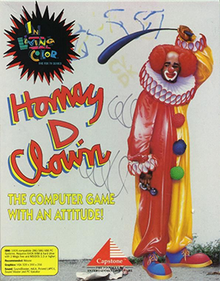
id Software LLC is an American video game developer based in Richardson, Texas. It was founded on February 1, 1991, by four members of the computer company Softdisk: programmers John Carmack and John Romero, game designer Tom Hall, and artist Adrian Carmack.

The Compact Disc-Interactive is a digital optical disc data storage format that was mostly developed and marketed by Dutch company Philips. It was created as an extension of CDDA and CD-ROM and specified in the Green Book specifications, co-developed by Philips and Sony, to combine audio, text and graphics. The two companies initially expected to impact the education/training, point of sale, and home entertainment industries, but CD-i eventually became best known for its video games.

Quake is a first-person shooter game developed by id Software and published by GT Interactive. The first game in the Quake series, it was originally released for MS-DOS, Microsoft Windows and Linux in 1996, followed by Mac OS and Sega Saturn in 1997 and Nintendo 64 in 1998. In the game, players must find their way through various maze-like, medieval environments while battling monsters using an array of weaponry.
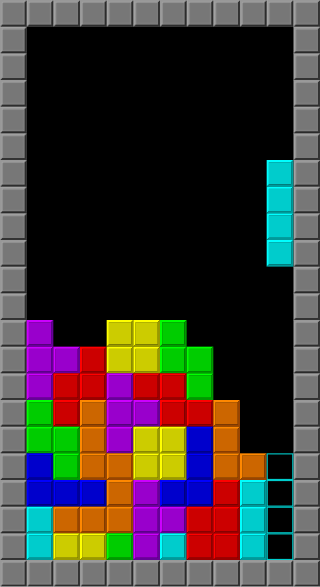
Tetris is a puzzle video game created by the Soviet software engineer Alexey Pajitnov in 1985. It has been published by several companies for multiple platforms, most prominently during a dispute over the appropriation of the rights in the late 1980s. After a significant period of publication by Nintendo, the rights reverted to Pajitnov in 1996, who co-founded the Tetris Company with Henk Rogers to manage licensing.
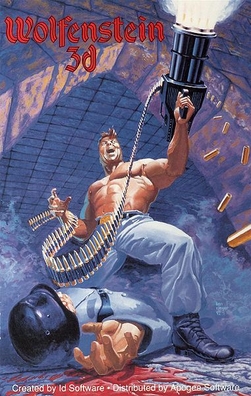
Wolfenstein 3D is a first-person shooter video game developed by id Software and published by Apogee Software and FormGen. Originally released on May 5, 1992, for DOS, it was inspired by the 1981 Muse Software video game Castle Wolfenstein, and is the third installment in the Wolfenstein series. In Wolfenstein 3D, the player assumes the role of Allied spy William "B.J." Blazkowicz during World War II as he escapes from the Nazi German prison Castle Wolfenstein and carries out a series of crucial missions against the Nazis. The player traverses each of the game's levels to find an elevator to the next level or kill a final boss, fighting Nazi soldiers, dogs, and other enemies with knives and a variety of guns.
A killer application is any computer application software that is so necessary or desirable that it proves the core value of some larger technology, such as its host computer hardware, video game console, software, programming language, software platform, or operating system. Consumers would buy the host platform just to access that application, possibly substantially increasing sales of its host platform.

Star Control: Famous Battles of the Ur-Quan Conflict, Volume IV is an action-strategy video game developed by Toys for Bob and published by Accolade. It was originally released for MS-DOS and Amiga in 1990, followed by ports for the Sega Genesis and additional platforms in 1991. The story is set during an interstellar war between two space alien factions, with humanity joining the Alliance of Free Stars to defeat the invading Ur-Quan Hierarchy. Players can choose to play as either faction, each with seven different alien starships which are used during the game's combat and strategy sections.

SimCity 2000 is a city-building simulation video game jointly developed by Will Wright and Fred Haslam of Maxis. It is the successor to SimCity Classic and was released for Apple Macintosh personal computers in 1993, after which it was released on other platforms over the following years, such as the Sega Saturn and SNES game consoles in 1995 and the PlayStation in 1996.

The Entertainment Software Rating Board (ESRB) is a self-regulatory organization that assigns age and content ratings to consumer video games in the United States and Canada. The ESRB was established in 1994 by the Entertainment Software Association, in response to criticism of controversial video games with excessively violent or sexual content, particularly after the 1993 congressional hearings following the releases of Mortal Kombat and Night Trap for home consoles and Doom for home computers. The industry, pressured with potential government oversight of video game ratings from these hearings, established both the IDSA and the ESRB within it to create a voluntary ratings system based on the Motion Picture Association of America film rating system with additional considerations for video game interactivity.

Star Control II: The Ur-Quan Masters is a 1992 video game, the sequel to Star Control. It was developed by Toys for Bob and originally published by Accolade in 1992 for MS-DOS. This game features exoplanet-abundant star systems, hyperspace travel, extraterrestrial life, and interstellar diplomacy, with the game featuring 25 different alien races with which communication is possible.

Rise of the Robots is a fighting game released by Time Warner Interactive in 1994. Originally developed for the Amiga and DOS by Mirage's Instinct Design, it was ported to various video game consoles, including the Super NES, the Mega Drive, and the 3DO Interactive Multiplayer. The game includes a single-player mode in which the player assumes the role of the ECO35-2 Cyborg, as he attempts to stop the Supervisor who takes over Electrocorp's facilities in Metropolis 4.

Roberta Lynn Williams is an American video game designer and writer, who co-founded Sierra On-Line with her husband, game developer Ken Williams. In 1980, her first game, Mystery House, became a modest commercial success; it is credited as the first graphic adventure game. She is also known for creating and maintaining the King's Quest series, as well as designing the full motion video game Phantasmagoria in 1995.

Speedrunning is the act of playing a video game, or section of a video game, with the goal of completing it as fast as possible. Speedrunning often involves following planned routes, which may incorporate sequence breaking and can exploit glitches that allow sections to be skipped or completed more quickly than intended. Tool-assisted speedrunning is a sub-category of speedrunning that uses emulation software to slow the game down and create a precisely controlled sequence of inputs.
Robert Frederick Ford is an American video game programmer. He is the son of mathematician L. R. Ford Jr.

Virtua Fighter 2 is a 1994 fighting video game developed by Sega. It is the sequel to 1993's Virtua Fighter and the second game in the Virtua Fighter series. It was created by Sega's Yu Suzuki-headed AM2 and was released for the arcades in 1994. Ports were released for the Sega Saturn in 1995 and Microsoft Windows in 1997.

Robert J. "RJ" Mical is an American computer programmer and hardware designer who has primarily worked in video games. He is best known for creating the user interface, Intuition, for Commodore's Amiga personal computer (1985), contributing to the design of the Amiga hardware, and co-designing, with Dave Needle, the Atari Lynx color handheld (1989) and the 3DO Interactive Multiplayer (1993).
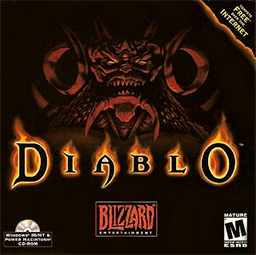
Diablo is an action role-playing video game developed by Blizzard North and released by Blizzard Entertainment in January 1997, and is the first installment in the video game series of the same name.
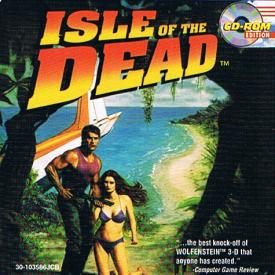
Isle of the Dead is a point-and-click first-person shooter horror video game developed by Rainmaker Software and published by Merit Software in 1993 for IBM and compatibles. The game centers around Jake Dunbar, the sole survivor of a plane crash, on a mysterious tropical island inhabited by zombies under the control of a mad scientist. Dunbar can interact with non-player characters to acquire weapons and obtain items through adventure game commands.
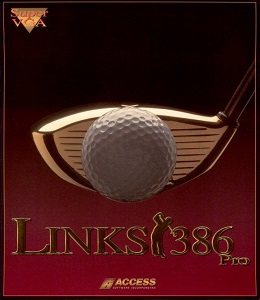
Links 386 Pro is a golf simulation sports game for MS-DOS released in 1992. It is part of the Links series, and was developed by Access Software as the follow-up to Links: The Challenge of Golf (1990). A Macintosh version, Links Pro, was released in 1994. An enhanced version called Links 386 CD was released for PC in 1995 that included audio comments by comedian Bobcat Goldthwait acting as the player's caddie, and an aerial flyby of each hole streamed from the game's CD-ROM. Re-branded versions of the game were also released for Microsoft Windows under the titles Microsoft Golf 2.0 (1994) and Microsoft Golf 3.0 (1996), part of the Microsoft Golf series.
